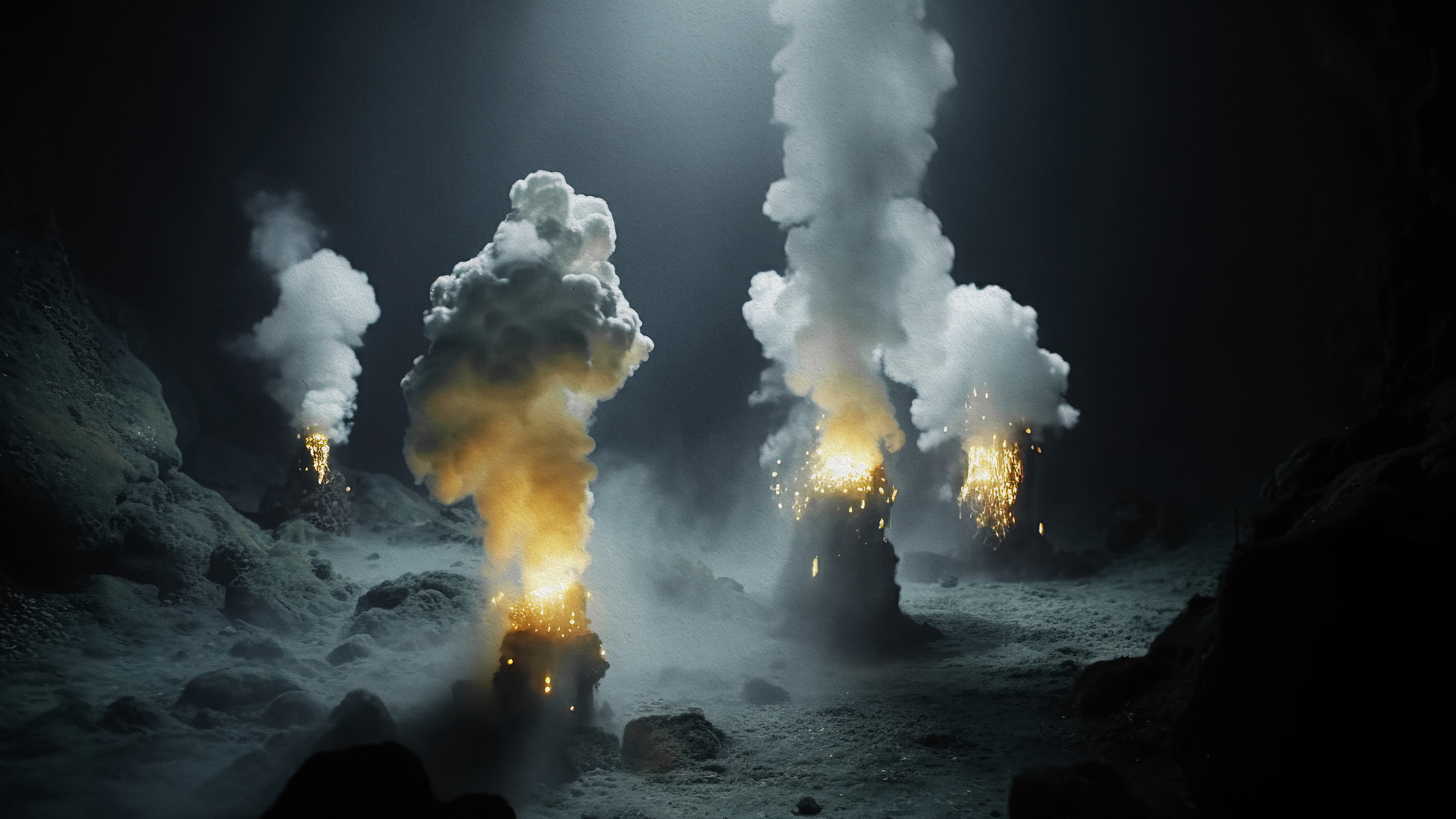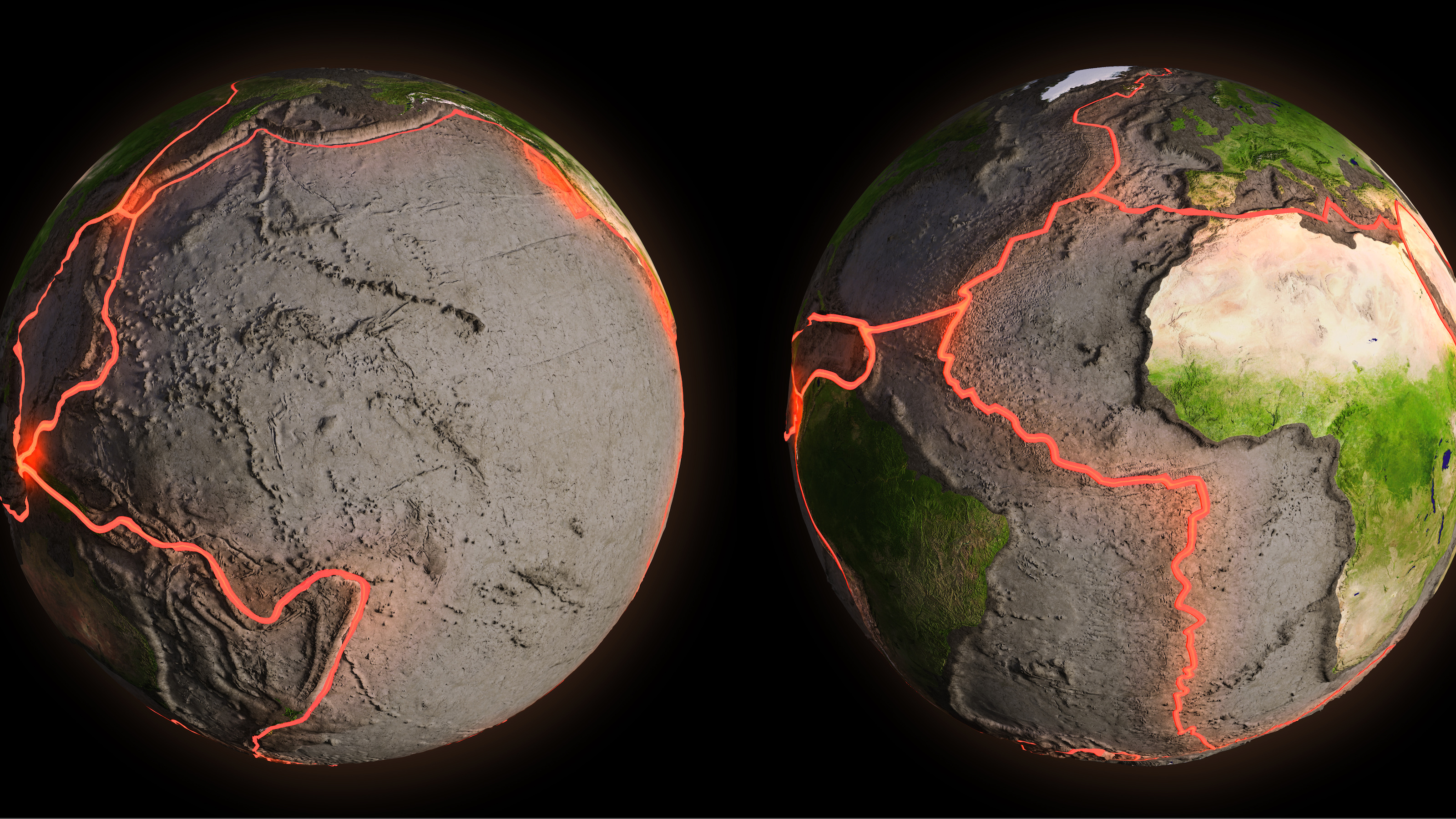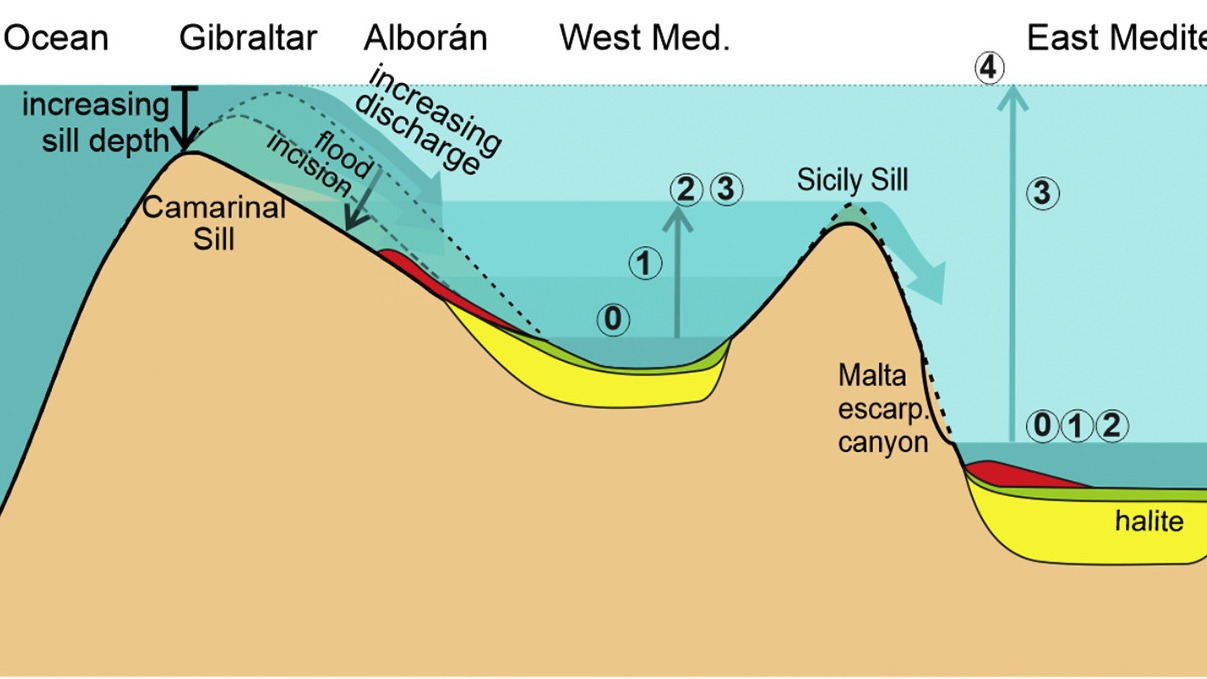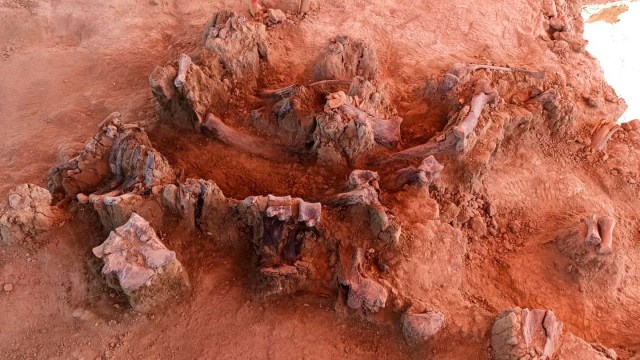Dinosaur-killing meteor hit Earth at ‘worst possible angle’
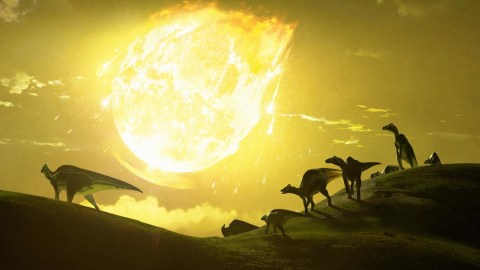
Credit: Chase Stone
- A new study suggests that the object that brought about the end of the dinosaurs crashed into the Earth at a 60-degree angle.
- This is about the worst possible angle for such an impact.
- The findings also help explain the nature of the impact crater in Yucatan.
A new study out of the Imperial College in London and published in Nature Communications suggests that the asteroid impact that wiped out the dinosaurs struck just the right place at just the right angle to be as utterly catastrophic as it was for the three-quarters of the planet’s species that it wiped out.
The angle of an asteroid impact can have effects on the aftermath every bit as dramatic as increasing or decreasing the size of the asteroid itself.
According to the findings of this study, the asteroid struck Earth at around sixty degrees. At that angle, the amount of climate-changing gas released by the impact is up to three times higher than the amount released by an impact at a lower one. The result of this was a global impact winter that doomed the dinosaurs and took a fair amount of other plant and animal life down with them.
Had it struck at a lower angle, the force of the impact would have been dispersed more widely in more shallow layers of rock, sending fewer gasses into the air. A review of most craters suggests that impactors tend to come in at low angles. The odds of one coming in at sixty degrees or above is just one in four.
This was made worse by the location, just off the coast of what is now Yucatan. Gypsum deposits at the impact site would have released vast amounts of sulfur gas into the atmosphere, as described above. If the impact site had been somewhere else with a different geological makeup, fewer climate-altering gasses would have been released by the impact.
Sometimes, you just can’t win.
The result of this perfect storm of high impact angle and sulfate laden location was apocalyptic. The impactor, assumed in this study to be a 12 kilometers (7 miles) wide asteroid made of granite, slammed into the Earth at terminal velocity. It blew a hole in the crust perhaps 30 kilometers (19 miles) deep, and sent up mountains of fluidized rocks to rival the Himalayas before they collapsed.
Endless supplies of vaporized sulfur were released into the atmosphere, severely reducing the amount of solar radiation reaching the Earth. Some estimates suggest this was severe enough to make photosynthesis impossible.
Would scientists tell us about a looming apocalypse?
We do know what the impact crater looks like; you can see it for yourself in the Yucatan. The part that is on land is known for its sinkholes, which map out the impact site. If you know that you can model a variety of scenarios and compare them to the conditions we see. If they match, we have a winner. This is what the scientists did.
Professor Collins of the Imperial College of London and the lead author of this study explained the results: “If you run the model at different impact angles, at 30 degrees and at 45 degrees, say, you can’t match the observations – you get centres of mantle uplift and of the peak ring on the downrange side of the crater centre. And for a straight overhead impact, at 90 degrees, the centres are all on top of each other. So, that’s doesn’t match the observations, either.”
As a result, we know that if the angle of impact was flatter it would have produced different effects, and the people reading this might be advanced dinosaurs rather than intelligent apes. Likewise, Yucatan might not have its famous, beautiful sinkholes.
Now that would be a tragedy.
